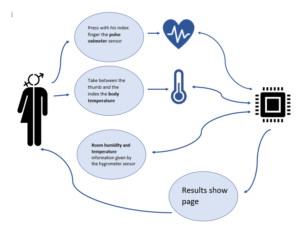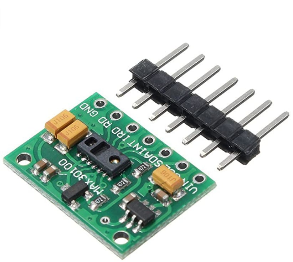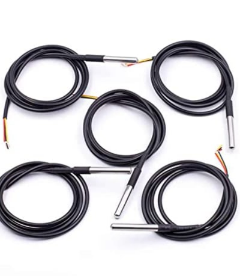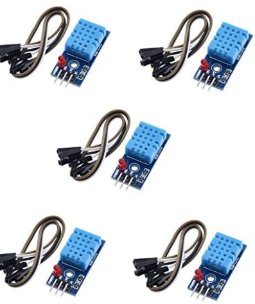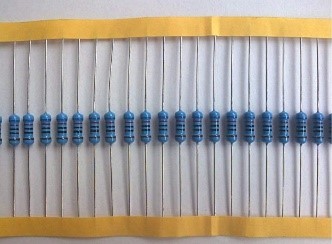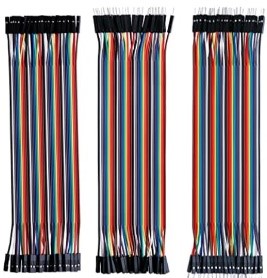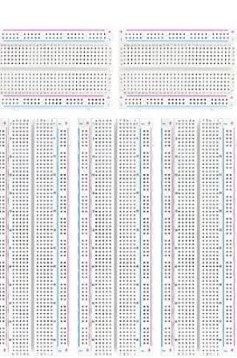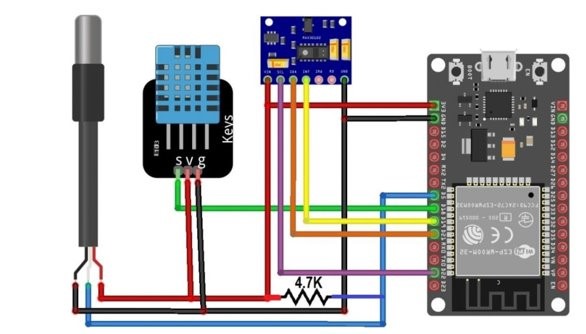
2021-L3-Galilee-Covid 19 Patient Monitoring
The World Health Organisation (WHO) has declared the coronavirus disease 2019 (COVID-19) a pandemic. A global coordinated effort is needed to stop the further spread of the virus. A pandemic is defined as “occurring over a wide geographic area and affecting an exceptionally high proportion of the population.”.
On 31 December 2019, a cluster of cases of pneumonia of unknown cause, in the city of Wuhan, Hubei province in China, was reported to the World Health Organisation. In January 2020, a previously unknown new virus was identified [3], subsequently named the 2019 novel coronavirus, and samples obtained from cases and analysis of the virus’ genetics indicated that this was the cause of the outbreak. This novel coronavirus was named Coronavirus Disease 2019 (COVID-19) by WHO in February 2020. The virus is referred to as SARS-CoV-2 and the associated disease is COVID-19.
Keeping track of the health status of Covid 19 patients at home is a difficult task during this period of sanitary emergency. Especially old patients should be periodically monitored. Positive people to the virus need to monitored their heart rate, blood oxygen level and body temperature in the eventuality of an increase or decrease of these conditions.
It could be useful to know how to build a device that allows you to monitor the health conditions of the forbearing via IoT, which is rapidly revolutionizing the healthcare industry. The device gives us the chance to track the patient health using Web server.
The aim of the Covid 19 patient monitoring is to check:
• Heart rate of the patient;
• Blood oxygen level of the patient;
• Body temperature of the patient;
• Temperature and humidity of the room in which is the patient.
Slides & Videos
Members
| Name | Contribution |
|---|---|
| Chiara Morgillo | REPORT DEVICE ASSEMBLING DIAGRAMS CODE VIDEO PRESENTATION |
| Erika del Rosso | REPORT DEVICE ASSEMBLING DIAGRAMS CODE VIDEO PRESENTATION |
State of the Art
Business Aspect
The first non-invasive oximeters, that appeared, were the ear oximeters, around 1935, when it
was proved that the transmission oximetry could be applied to the external ear. However, the
major inconvenient of ear oximetry was revealed to be the inability to differentiate light
absorption due to arterial blood from that due to venous blood and tissues. Due to the volume of
the components involved, the high cost of instrumentation, and the development of technology to
solve many of these problems, the ear oximeters is no longer commercialized.
Laser oximetry is a new non-invasive method to evaluate determine the oxygen saturation on
targeted areas of tissue, through a continuous wave optical spectrometer operating in the nearinfrared spectrum. Nowadays, there are small oximeter for measure the oxygen saturation on
extremities of human body such as finger. A modern pulse oximeter incorporates the electronics
and sensor into one single unit.
In recent months, the oximeter has jumped to the forefront of the news because it has proved
invaluable towards the Covid-19 subjects under observation. Through the test (oximetry) it is in
fact possible to suspect a severe complication, that is to say that if a drop in oxygen concentration
in the circulatory stream should occur it would be the unequivocal signal that a patient is
harbouring interstitial pneumonia, therefore a sign that the subject monitored is worsening to the
point that ambulance transport with access to the emergency room or intensive care is required.
In fact, the most used one is the pulse oximeter that also measures the body temperature. In
exceptional cases, this last can contain also a room thermometer. 
Related to the body temperature, there are different kinds of thermometer. The most used in this virus period is the infrared thermometer, which doesn’t need to be touched. Some countries use it to monitor the people health in public places.
The first thermometer was 30 cm long and taking a patient’s temperature could take up to half an hour. Subsequently the thermometer assumed the dimensions it has today, allowing an accurate and at the same time rapid measurement. We used analogic mercury thermometers until 2009, then they were withdrawn due to the toxicity of the mercury itself. The latter, accurate and reliable, had the only drawback of being tiring enough to lower after the measurement. In recent years, the need to reduce the time required for measurement has become widespread. In fact, digital electronic thermometers are faster in temperature measurements and the digital display is easier to read. While, infrared thermometers measure the heat generated by surfaces and cavities. The main advantage of this type of thermometers is their speed; it only takes a few seconds to measure the temperature.
-
On the healthcare market, many devices are available to monitor these states:
- Pulse oximeter, which is a non-invasive medical device, that measures the oxygen saturation in the peripheral arterial blood and at the same time the heart rate, those helping to identify the possible presence of the first signs of pneumonia, one of the most serious symptoms of Coronavirus.
- Thermometer, which is a measuring instrument, that measures the body temperature. High fever, in fact, is one of the most common symptoms of Covid 19.
- Hygrometer thermometer, which measures the room temperature and humidity. Many diseases are related to humidity: asthma, general respiratory diseases, often depend on the quantity / quality of the air.
Pulse oximeter
The prices of a pulse oximeter range, roughly, from about 20 euros to about 200 euros. A low-cost device will be the choice of those who will use the device occasionally, because it doesn’t suffer from diseases, that require constant monitoring. Whereas a higher cost will be preferred by those users who are looking for reliability and solidity from a device they will use frequently. The choice is subjective.
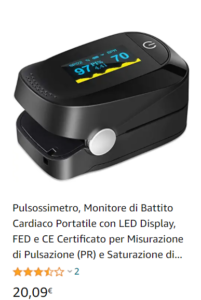
Thermometer
Before purchasing this product, it is very important to know the different types on the market and what they stand out for. Each type has a different degree of accuracy and a specific area of use, so the most suitable purchase choice will depend on your personal needs. The prices vary from 3 euros to 1000 euros.
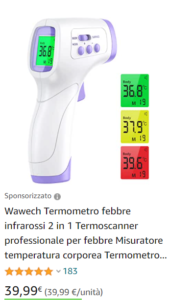
Hygrometer thermometer
Keeping the temperature in the house optimal is extremely important, as is constantly ventilating the room. If there are no sources of air in the most experienced areas, it is advisable to rely on the hygrometer in order to keep everything under control. The hygrometer is a very convenient, inexpensive and simple to use tool, excellent for avoiding unpleasant conditions. Especially in the presence of children, the elderly and asthmatics, keeping humidity under control is a necessity that should not be underestimated for any reason.
The prices vary from 2 euros to 300 euros.

Technical Aspect
Project Description
Problem Definition
Challenges & Motivation
• Heart rate of the patient;
• Blood oxygen level of the patient;
• Body temperature of the patient.
The doctor treating the patient in question will therefore be able to access this information at any time and whenever these parameters change substantially, arrange for a visit to the patient in the manner deemed most appropriate. In fact, our device must allow those with the right information to be able to view the parameters considered with a simple internet connection at any time.
The device must therefore be composed of three sensors, each with a different and specific task:
• Pulse Oximeter Sensor, used to monitor heart rate and oxygenation;
• Temperature sensor, is used to monitor the patient's body temperature;
• Temperature and humidity sensor, is used to monitor the temperature and humidity of the room where the patient is, as these conditions could bring significant changes in the parameters previously described.
The device will input all the above parameters and then bring them back to a single web page, by entering the IP address.
Real and Complete Usecases
It could be useful to know how to build a device that allows you to monitor the health conditions of the forbearing via IoT, which is rapidly revolutionizing the healthcare industry. The device gives us the chance to track the patient health using Web server.
The aim of the Covid 19 patient monitoring is to check:
- Heart rate of the patient;
- Blood oxygen level of the patient;
- Body temperature of the patient;
- Temperature and humidity of the room in which is the patient.
An example of use of this device is to allow interested person (as the patience, his family, his doctor, …) to access to these results using a simple IP address.
Technical Description
To use the device the user has to press with his index finger the pulse oximeter sensor, MAX30100, and, simultaneously, take between the thumb and the index the body temperature sensor, DS18B20. The device will receive the collected data as input, taking also the room humidity and temperature sensor information, DHT11, automatically. At the end the user has to insert the IP, given by the device, ESP32, to connect to the results show page.
Hence, the sensors data are stored in the ESP32 memory, then they are sent via Wifi at regular intervals to the IP address.

